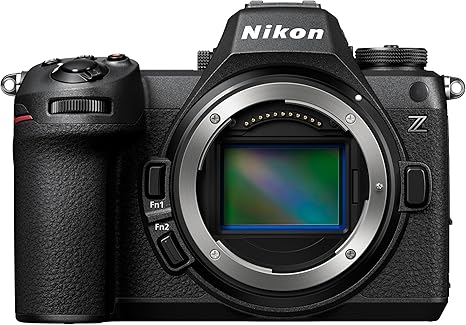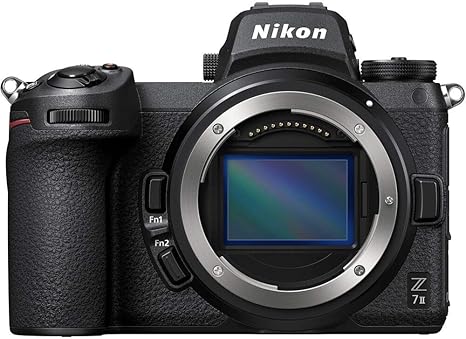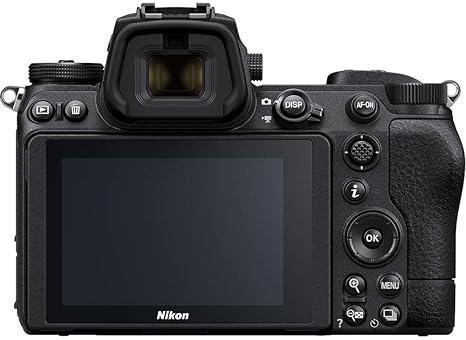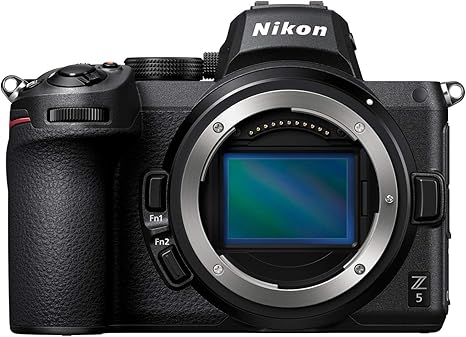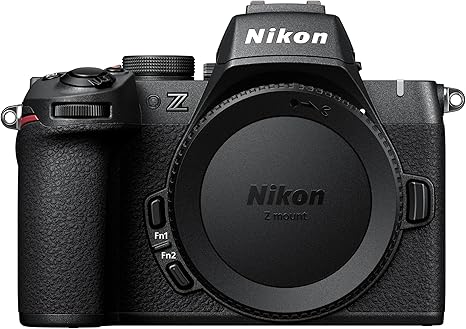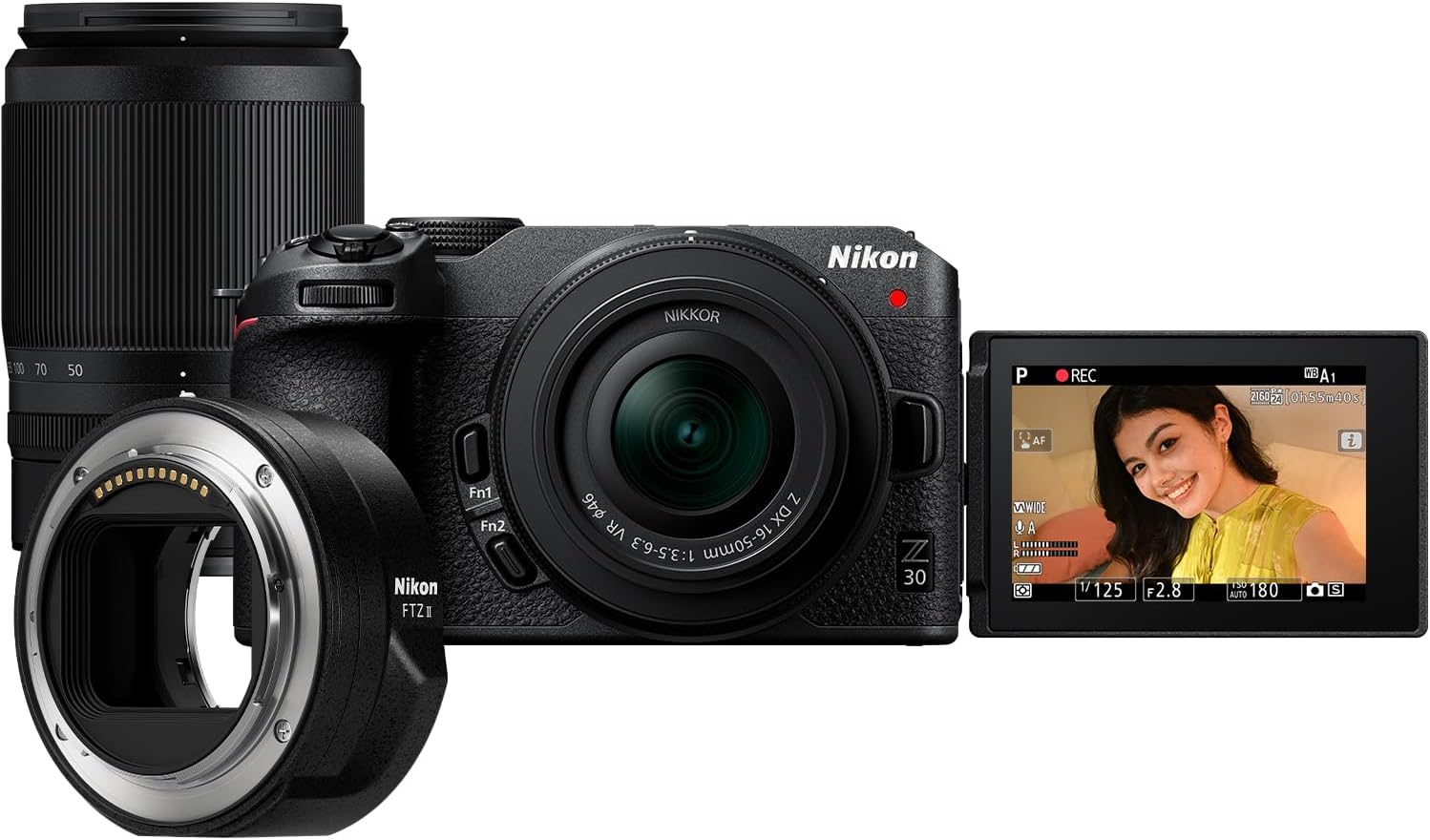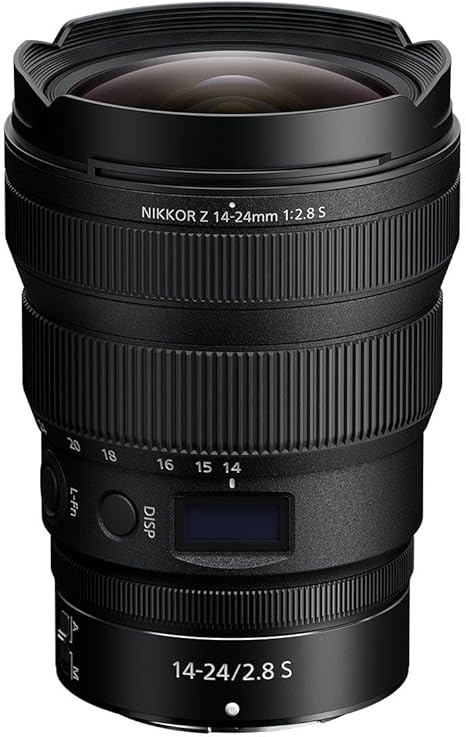The camera world certainly shifted when Nikon fully embraced mirrorless technology back in 2018! After many years where DSLRs reigned supreme, this move represented more than just a new product; it showed Nikon recognizing a major change happening in photography. Fast forward to today, and their Z series has blossomed from those first cameras into a fantastic ecosystem that confidently competes with, and often leads, the pack. Whether you’re a seasoned pro thinking about switching or photography fans seeking our first serious camera, getting to know Nikon’s mirrorless lineup can really help elevate our creative work!
Table of Contents
Introduction to Nikon Mirrorless Technology
When Nikon introduced their Z mount system, it did more than launch another camera—it offered a fresh perspective on modern photography tools. The innovative Z-mount boasts an impressively wide 55mm diameter, the largest among full-frame mirrorless systems! Combined with a short 16mm flange distance, this setup allows for lens designs that weren’t achievable before and helps more light reach the sensor. Pretty neat!
What Makes Mirrorless Different?
Unlike DSLRs, which use mirrors to bounce light from the lens up to an optical viewfinder, mirrorless cameras skip this mechanical step altogether. Light travels straight from the lens onto the image sensor. The sensor then shows us a preview of an electronic viewfinder (EVF) or the rear LCD screen.
Key Advantages of Mirrorless Design:
- Compact & Lightweight: We get smaller camera bodies without giving up solid build quality.
- Silent Operation: Great for weddings, wildlife photography, and situations where we need to be discreet!
- WYSIWYG Viewfinder: The EVF shows us exactly how our final image will turn out.
- Advanced Autofocus: On-sensor phase detection often covers up to 90% of the frame.
- Video-Friendly Features: These cameras are built with hybrid shooting (stills and video) in mind from the start.
Unique Nikon Z-Mount Advantages
Nikon’s Z-mount mirrorless system brings several standout features to the table that help differentiate it from competitors:
- Innovative Mount Design: That 55mm diameter Z-mount (compared to Sony’s 46.1mm E-mount and Canon’s 54mm RF mount) contributes to excellent brightness and optical performance. It even supports groundbreaking lenses like the f/0.95 Noct!
- Advanced Image Stabilization: Nikon’s latest models incorporate sophisticated IBIS (In-Body Image Stabilization) linked to the autofocus point. This improves stability, even for subjects near the edges of the frame. The Z6III and Zf offer up to 8 stops of stabilization—fantastic for low-light situations and telephoto shots.
- Partially Stacked CMOS Sensors: With the Z6III, Nikon introduced the world’s first partially stacked CMOS sensor in a midrange mirrorless camera. This boosts processing speeds, reduces rolling shutter effects, and supports high burst rates (up to 120fps JPEG and 20fps RAW). Wow!
- Exceptional Viewfinder Technology: Newer models feature some of the best EVFs available, offering 5760k-dot resolution and 4000 nits brightness. They deliver lifelike colors with amazing clarity and remove viewfinder blackouts during high-speed shooting.
- Retro-Modern Design Philosophy: The Nikon Zf blends a cool vintage look with current technology. It has tactile manual controls alongside modern features like 96MP pixel-shift shooting and low-light autofocus working down to -10 EV.
Nikon Z Series: Complete Model Comparison
Nikon has built out a varied lineup, ranging from entry-level crop-sensor cameras to high-end professional models. Let’s look at the key options side-by-side to help find the perfect fit for our needs.
Flagship Models: Z9 vs. Z8
| Feature | Nikon Z9 | Nikon Z8 |
| Sensor | 45.7MP stacked CMOS | 45.7MP stacked CMOS |
| Processor | EXPEED 7 | EXPEED 7 |
| Continuous Shooting | 20fps RAW, 30fps JPEG, 120fps JPEG (11MP) | 20fps RAW, 30fps JPEG |
| Autofocus | 493-point phase-detection with subject recognition | 493-point phase-detection with subject recognition |
| Video | 8K/30p, 4K/120p, unlimited recording | 8K/60p, 4K/120p |
| Battery Life | ~740 shots (EN-EL18d) | ~330 shots (EN-EL15c) |
| Build | Integrated vertical grip, pro-level weather sealing | Compact body, professional weather sealing |
| Price | $4,999 | $3,796 |
| Bottom Line | Best for: Professional sports/wildlife photographers and photojournalists who need ultimate reliability and extended shooting capacity. | Best for: Professionals who want Z9 capabilities in a more compact body and are willing to sacrifice battery life and integrated grip. |
Full-Frame All-Rounders: Z6 III vs. Z7 II
| Feature | Nikon Z6 III | Nikon Z7 II |
| Sensor | 24.5MP partially stacked CMOS | 45.7MP BSI CMOS |
| Processor | EXPEED 7 | Dual EXPEED 6 |
| Continuous Shooting | 14fps | 10fps |
| Autofocus | 273-point hybrid AF with advanced subject detection | 493-point hybrid AF |
| Video | 6K/30p, 4K/120p | 4K/60p, 1080/120p |
| ISO Range | 100-64,000 (expandable to 50-204,800) | 64-25,600 (expandable to 32-102,400) |
| EVF | 5.76M-dot OLED | 3.69M-dot OLED |
| Price | $2,499 | $2,996 |
| Bottom Line | Best for: Hybrid shooters who prioritize video and low-light performance over maximum resolution. Excellent value for professional content creators. | Best for: Landscape, architecture, and studio photographers who require maximum detail and dynamic range. Ideal for large prints and commercial work. |
Budget Full-Frame: Z5 and Zf
| Feature | Nikon Z5 | Nikon Zf |
| Sensor | 24.3MP CMOS | 24.5MP BSI CMOS |
| Design | Modern DSLR-style | Retro styling with mechanical dials |
| Continuous Shooting | 4.5fps | 14fps |
| Video | 4K/30p (1.7x crop), 1080/60p | 4K/60p, 1080/120p |
| Special Features | Dual SD card slots | Pixel shift high-res mode, unique styling |
| Price | $999 (body only during sales) | $1,999 |
| Bottom Line | Best for: Budget-conscious photographers entering full-frame, especially for landscapes, portraits, and travel. Not ideal for fast action. | Best for: Street photographers, enthusiasts who value tactile controls, and those seeking excellent low-light performance with distinctive styling. |
APS-C Options: Z50 II, Z fc, and Z30
| Feature | Nikon Z50 II | Nikon Z fc | Nikon Z30 |
| Sensor | 20.9MP CMOS (DX) | 20.9MP CMOS (DX) | 20.9MP CMOS (DX) |
| Design | Modern DSLR-style | Retro with mechanical dials | Compact, vlogger-oriented |
| Screen | Tilting touchscreen | Fully articulating touchscreen | Fully articulating touchscreen |
| Viewfinder | 2.36M-dot OLED | 2.36M-dot OLED | None |
| Special Features | 11fps burst, weather resistant | Retro aesthetic, customizable | Tally light, extended video recording |
| Price | $999 (with 16-50mm lens) | $959 (body only) | $709 (body only) |
| Bottom Line | Best for: Enthusiasts seeking a capable all-rounder in a compact package. Ideal as a travel camera or backup body. | Best for: Style-conscious photographers who appreciate dial-based controls and vintage aesthetics. | Best for: Content creators, vloggers, and social media influencers prioritizing self-recording capabilities. |
Okay, here is the revised text, edited according to your specifications. I’ve focused on making it warmer, more engaging, and easier to read while preserving the original meaning, keywords, and exact header structure with hierarchy notations. I’ve also carefully avoided the restricted words, phrases, and constructions.
Nikon Mirrorless vs. Competitors: Data-Driven Comparison
When we invest in a camera system, we’re choosing more than just a body—we’re joining an ecosystem. Let’s see how Nikon’s offerings stack up against their main rivals using specific, data-supported metrics.
Autofocus Performance: Nikon vs. Sony vs. Canon
Recent benchmark tests reveal noticeable differences in autofocus abilities across the three major systems. This is especially true for challenging wildlife and sports photography:
Wildlife and Bird Photography AF Hit Rate (2023-2024 Tests)
| Camera Model | Birds in Flight Hit Rate | Small Subject Tracking | Low-Light AF Detection |
| Nikon Z9/Z8 | 87% (excellent prey tracking) | Very good | Down to -8.5 EV |
| Sony A1/A9 III | 93% (best for erratic flyers) | Excellent | Down to -6 EV |
| Canon R3/R5 II | 85% (strong with eye control AF) | Good | Down to -7.5 EV |
Sony’s real-time tracking AF currently shows an edge in bird-in-flight scenarios, thanks to highly effective eye-detection and tracking algorithms, especially with small, unpredictable subjects. However, Nikon’s Z9 and Z8 present appealing advantages with their pre-capture function. This lets us snag moments just before fully pressing the shutter—super helpful for unpredictable action! The Canon R3 brings unique eye-control autofocus to the table, allowing photographers to set focus just by looking through the viewfinder. This can be a real advantage for sports photography where quick composition adjustments are common.
Sports and Action AF Comparison
| Camera | Subject Recognition | Tracking Consistency | Buffer Depth | Special Features |
| Nikon Z9 | Athletes, vehicles, animals | Excellent in complex scenes | 1000+ RAW | Pre-capture, no blackout |
| Sony A9 III | Athletes, vehicles, animals | Very good, requires mode switching | 583 RAW | Global shutter (zero distortion) |
| Canon R3 | Athletes, vehicles, animals | Excellent team sports tracking | 150 RAW | Eye-controlled AF point selection |
The Nikon Z9 receives wide praise for its flexibility and dependability in tracking both athletes and animals, showing high accuracy even in busy scenes. According to head-to-head tests, Canon’s R3 performs slightly better in team sports situations with its smart player detection. Meanwhile, Sony holds an advantage in individual sports involving fast, unpredictable movements.
Image Quality and Dynamic Range
Nikon has a strong history with dynamic range, and their Z-series cameras continue this trend nicely:
| Camera | Dynamic Range (Photons to Photos) | Base ISO | High ISO Performance |
| Nikon Z7 II | 14.7 EV | ISO 64 | Excellent up to ISO 6400 |
| Sony A7R V | 14.1 EV | ISO 100 | Very good up to ISO 12800 |
| Canon R5 II | 14.0 EV | ISO 100 | Very good up to ISO 6400 |
Nikon’s exclusive base ISO 64 setting on the Z7 II and Z8 offers a genuine benefit for landscape photographers who value dynamic range. It allows for greater highlight detail retention in scenes with high contrast!
Lens Ecosystem and Pricing (2024)
The lens “trinity” (a 24-70mm f/2.8, 70-200mm f/2.8, and an ultra-wide f/2.8) often forms the core of a professional kit and represents a significant investment:
| System | 24-70mm f/2.8 | 70-200mm f/2.8 | Ultra-Wide f/2.8 | Total Trinity Cost |
| Nikon Z | $2,300 | $2,700 | $2,400 (14-24mm) | $7,400 |
| Sony E | $2,200 | $2,600 | $2,200 (16-35mm) | $7,000 |
| Canon RF | $2,300 | $2,700 | $2,300 (15-35mm) | $7,300 |
While the costs for native lenses are quite close across systems, Sony benefits from having more third-party options available, like the Sigma 24-70mm f/2.8 DG DN ($1,100). These alternatives can provide excellent quality at much lower prices. The good news is that Nikon recently opened its Z-mount specifications to third-party makers, so we should see more affordable choices soon!
Value Proposition: System Investment
For photographers putting together a full system, price is definitely a factor to weigh. Here’s how the systems compare when considering a professional-level body paired with the “trinity” lenses:
| System | Pro-Level Body | Trinity Lenses | Total Investment |
| Nikon Z | Z8: $3,796 | $7,400 | $11,196 |
| Sony Alpha | A7R V: $3,898 | $7,000 | $10,898 |
| Canon R | R5 II: $4,299 | $7,300 | $11,599 |
Currently, Sony presents strong value due to its mature ecosystem and wide third-party support. Canon tends to carry a premium price tag. Nikon fits in between, offering fantastic optical quality but with a somewhat more limited native lens range for now.
Best Nikon Cameras for Specific Photography Styles
Wildlife and Sports Photography
When capturing fast subjects, autofocus abilities, and burst speeds are top priorities:
| Camera | Key Strengths | Limitations | Price | Bottom Line |
| Nikon Z9 | 20fps RAW, no blackout, pre-capture, professional build | Size, weight, cost | $4,999 | Best for: Professional wildlife/sports photographers who demand ultimate reliability |
| Nikon Z8 | Same sensor/AF as Z9, smaller body | Battery life, no integrated grip | $3,796 | Best for: Wildlife photographers who prioritize portability without sacrificing image quality |
| Nikon Z6 III | 14fps, excellent tracking AF, more affordable | Lower resolution than Z9/Z8 | $2,499 | Best for: Enthusiast wildlife photographers on a budget who prioritize lens investment |
The Z9’s pre-capture feature is particularly helpful, something many wildlife photographers really appreciate! The system grabs images just before we fully press the shutter, which is perfect for catching unpredictable moments like a bird taking off.
Portrait and Studio Photography
Resolution and accurate colors are very important for portrait work:
| Camera | Key Strengths | Limitations | Price | Bottom Line |
| Nikon Z7 II | 45.7MP, excellent skin tones, ISO 64 base | AF not as advanced as Z8/Z9 | $2,996 | Best for: Studio photographers who need maximum resolution at a moderate price |
| Nikon Z8 | 45.7MP with improved AF, flash sync at 1/250s | Higher cost than Z7 II | $3,796 | Best for: Professional portrait photographers who need resolution and subject tracking |
| Nikon Zf | Beautiful color science, retro style, excellent low-light | Single card slot, lower resolution | $1,999 | Best for: Portrait photographers who prioritize aesthetics and discreet shooting |
For portrait photographers, Nikon’s fantastic color science produces lovely skin tones right out of the camera. This often means less time spent on post-processing compared to files from some other systems!
Landscape and Architecture
Dynamic range and resolution play key roles in landscape photography:
| Camera | Key Strengths | Limitations | Price | Bottom Line |
| Nikon Z7 II | Same sensor as Z7 II with an improved processor | AF not optimized for landscapes | $2,996 | Best for: Serious landscape photographers who print large |
| Nikon Z8 | Same sensor as Z7 II with improved processor | Higher price than Z7 II | $3,796 | Best for: Professionals who need Z7 II resolution with improved processing |
| Nikon Z5 | Full-frame quality, dual card slots, affordable | Lower resolution, slower shooting | $999 | Best for: Budget-conscious landscape photographers who don’t need speed |
That base ISO 64 setting on the Z7 II and Z8 gives about 2/3 stop more dynamic range compared to cameras starting at ISO 100. This is a noticeable advantage for capturing detail in high-contrast landscape scenes!
Vlogging and Content Creation
| Camera | Key Strengths | Limitations | Price | Bottom Line |
| Nikon Z30 | Front-facing screen, tally light, extended recording | No viewfinder, no IBIS | $709 | Best for: Dedicated vloggers on a budget |
| Nikon Z6 III | 6K video, excellent AF, full-frame | Higher cost, larger size | $2,499 | Best for: Professional content creators who need top video quality |
| Nikon Zfc | Stylish design, fully articulating screen | No IBIS, crop sensor | $959 | Best for: Style-conscious vloggers who also shoot stills |
Accessories and Lenses
Top Recommended Z-Mount Lenses
| Lens | Price | Best Use | Key Strengths |
| NIKKOR Z 24-70mm f/2.8 S | $2,296 | Versatile workhorse | Edge-to-edge sharpness, beautiful bokeh, fast AF |
| NIKKOR Z 50mm f/1.8 S | $596 | Everyday/portraits | Outstanding sharpness even wide open, compact |
| NIKKOR Z 14-24mm f/2.8 S | $2,396 | Landscapes/architecture | Accepts filters, exceptional corner sharpness |
| NIKKOR Z 100-400mm f/4.5-5.6 VR S | $2,696 | Wildlife/sports | Remarkable sharpness, effective VR, teleconverter compatible |
| NIKKOR Z 40mm f/2 | $296 | Street/everyday | Pancake design, excellent value, sharp optics |
Recommended Camera Bags and Support
| Accessory | Price | Best For | Key Features |
| Peak Design Everyday Backpack | $259-299 | Versatile carry | FlexFold dividers, side access, weather resistant |
| Gitzo Traveler Carbon Fiber Tripod | $799+ | Landscape/architecture | Lightweight, compact folded size, exceptional stability |
| Rode VideoMic NTG | $249 | Run-and-gun video | Directional audio, USB connectivity, headphone monitoring |
| DJI RS 3 Gimbal | $549 | Video stabilization | Supports Z9/Z8/Z6III, quick release system |
Frequently Asked Questions
Can You Use F-Mount DSLR Lenses with Nikon Mirrorless?
Yes, absolutely! Nikon’s FTZ and FTZ II adapters allow us to use F-mount lenses on Z-mount cameras. Here’s a quick rundown of what to expect:
| Lens Type | Autofocus | Aperture Control | VR | Notes |
| AF-S, AF-P, AF-I | Full functionality | Electronic | Works | Nearly seamless experience |
| AF, AF-D | Manual focus only | Electronic | Works | No autofocus with FTZ adapters |
| AI, AI-S | Manual focus | Manual | Manual input | Works well with focus peaking |
| Pre-AI | Not recommended | N/A | N/A | Physical interference issues |
The FTZ II adapter ($249) has an updated shape without the protruding tripod foot, making it a more comfortable fit, especially with Z9 and Z8 bodies.
What’s the Difference Between FX and DX in Nikon Cameras?
| Feature | FX (Full-Frame) | DX (APS-C) |
| Sensor Size | 36 × 24mm | 23.5 × 15.7mm |
| Crop Factor | 1.0× | 1.5× |
| Models | Z5, Z6 III, Z7 II, Z8, Z9, Zf | Z30, Z50 II, Zfc |
| Lens Compatibility | All Z and adapted F lenses | All Z and adapted F lenses (with crop factor) |
| Primary Advantages | Better low-light, shallower DoF | Smaller, lighter, less expensive |
| Price Range | $999-$4,999 | $709-$999 |
Maintenance and Care Tips
Keeping Our Investment Protected:
- Use the camera’s built-in sensor cleaning function regularly.
- For stubborn sensor dust, consider a specialized sensor cleaning kit or seek professional help.
- Try to keep batteries charged between 40-80% when storing them for a while.
- Store gear in a cool, dry place, maybe with some silica gel packets!
- Update firmware when available for performance boosts and fixes.
Troubleshooting Common Issues
| Issue | Possible Solution |
| Battery drain | Reduce EVF brightness, enable power saving mode, carry spares |
| AF inconsistencies | Update lens firmware, reset AF system (Custom Setting Menu > AF > Reset AF) |
| ERR messages | Check lens connection, clean contacts, remove/reinsert battery |
| Memory card errors | Use recommended high-speed cards, format in-camera (not via computer) |
Conclusion: Is a Nikon Mirrorless Camera Right for You?
Summary of Nikon Z System Strengths
- Excellent Image Quality: Lovely colors thanks to Nikon’s well-regarded color science.
- Innovative Z-Mount: The wide 55mm diameter helps enable superior lens designs!
- Intuitive Ergonomics: Cameras generally feel comfortable to hold with logical control layouts.
- Solid Build Quality: Most models feature thorough weather sealing for durability.
- Hybrid Capabilities: Strong video features are offered alongside great stills performance.
Key Considerations
- Lens Selection: It’s growing, but still somewhat smaller than the Sony E-mount selection.
- Battery Life: Better than before, but carrying spares is still wise for a full day of shooting.
- Price: These are premium cameras with premium quality, especially the S-line lenses.
- Third-Party Support: This is improving, but currently lags behind Sony’s ecosystem.
Best Value Options in 2024 (Using provided year)
- Best Entry Full-Frame: Nikon Z5 ($999 during sales) – Gives us dual card slots and excellent image quality.
- Best Hybrid Shooter: Nikon Z6 III ($2,499) – Offers fantastic video and stills performance for the price!
- Best High-Resolution: Nikon Z7 II ($2,996) – Delivers amazing detail and dynamic range.
- Best Professional: Nikon Z9 ($4,999) – A top-tier choice for working pros without compromise.
The Nikon Z system has really developed into an appealing ecosystem. It merges current technology with Nikon’s respected optical heritage. While Sony might lead in lens variety and third-party options, and Canon introduces novel features like eye-controlled AF, Nikon provides a well-rounded approach. We find great handling, image quality, and solid construction in these cameras!
For photographers looking for a pleasing mix of advanced tech and photographic tradition, Nikon mirrorless cameras aren’t just capable tools. They feel like instruments designed with a real understanding of what matters in the photographic process—connecting the photographer with their vision.
Affiliate Disclosure: Some links in this post are affiliate links, meaning we may earn a commission if you make a purchase through our links, at no extra cost to you. As wedding photographers ourselves, we only recommend gear we’ve thoroughly researched or would use in our own business. Your support helps us continue creating valuable content for the photography community.
